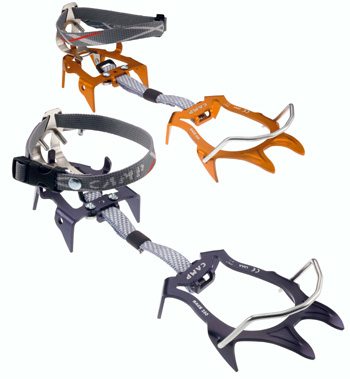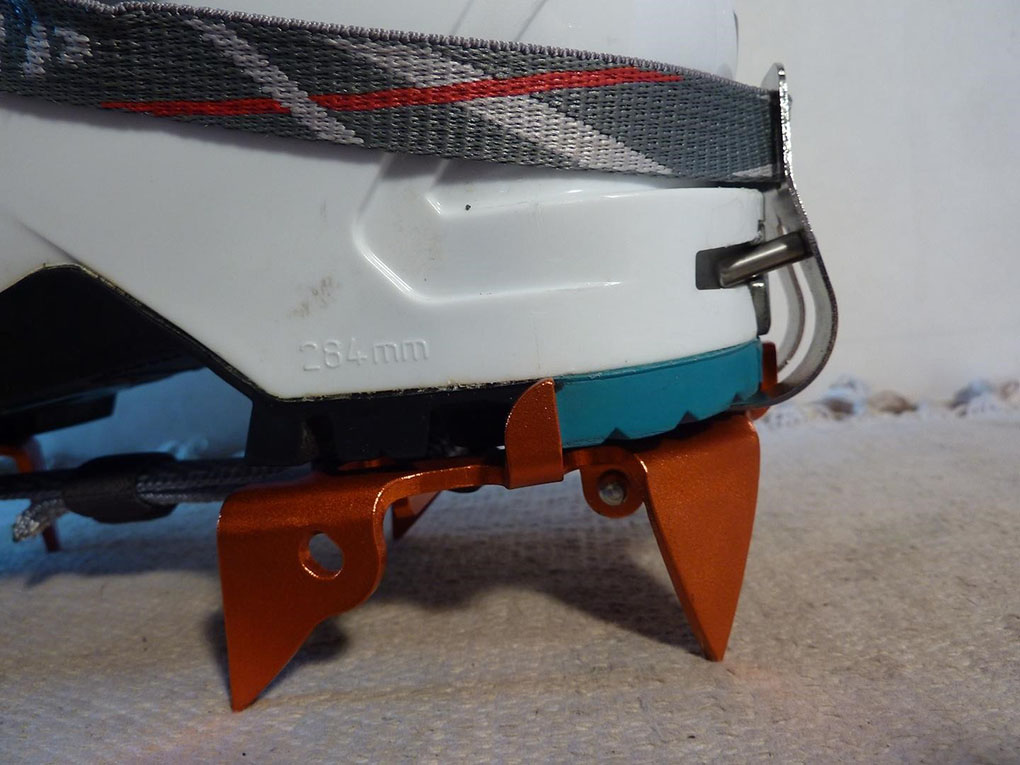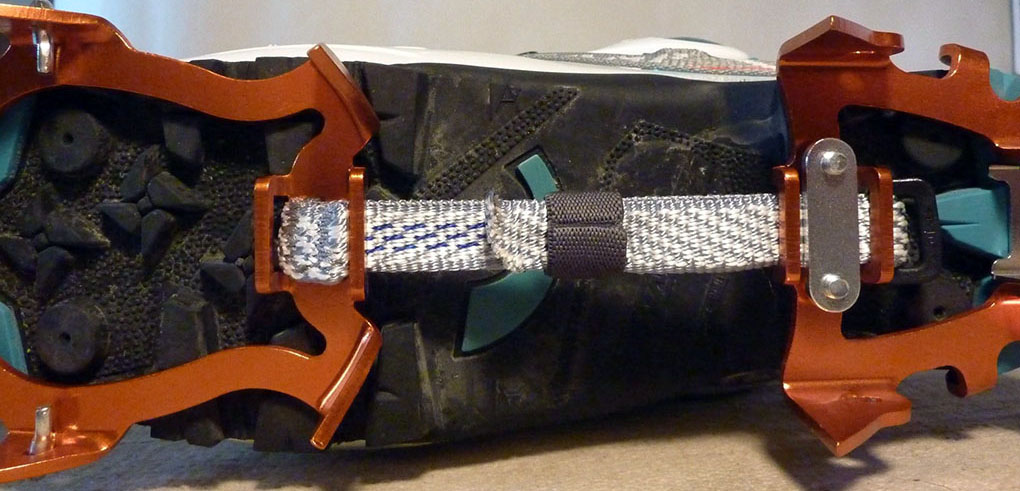
CAMP Race 290 Crampons
Manufacturer’s Stated Weight: 290 grams
Blister’s measured weights:
- With dry Dyneema webbing: 291 grams
- With wet Dyneema webbing: 314 grams
- With aluminum bars: 317 grams
- Carrying case: 71 grams
- Adjustment tool: 21 grams
Test Locations: Juneau, Alaska; British Columbia, Canada
Days Tested: 7
The CAMP Race 290 crampon is an ultra-light, aluminum crampon designed for competitive ski mountaineering. But these crampons are also attractive to the recreational ski mountaineer on big days with long approaches, where a heavy pack makes everything harder. I am no competitive ski mountaineer, but I did take the CAMP Race 290s through a variety of mountain environments to test their proficiency across a range of conditions.
Boot Compatibility
I use these with my Dynafit One Px boots (mondo size 25, sole length 284mm). There is about 2mm of space between the rear side bars of the crampons and the sole of my boots. The toe bar seems to be made to accommodate a wider boot, as there is about 4-5mm of space between the toe bar and my boot, so the fit is a touch loose laterally on my narrower One Px boots. The fit achieved with these crampons will depend on the width of the boot they’re used with, and less on the boot’s length. More importantly, however, these crampons were not intended for technical climbing, and therefore an exact fit is ultimately less important.
Heel Attachment
CAMP’s Dynafit-style heel attachment is ingenious and functional. A curved metal plate comes out of the rear of the crampon with two metal, Dynafit-esque pins molded into the middle. The shape of the metal plate allows the user to bend open the metal to allow the heel of the boot to sit on the crampon, and then release the metal to set the pins into the boot. When the boot is in the crampon, the two metal pins that fit in the heel piece will not be fully seated in the heel of the boot, nor be perfectly perpendicular to the back of its heel block. This concerned me at first because I expected the pins of the crampons to fit snugly and squarely into my boot. However, there have been no issues with this fit, even when front-pointing and placing a lot of stress on the heel attachment.

Aluminum Bar vs. Dyneema: Fit Adjustment
These crampons come with the both a Dyneema strap and an aluminum bar that can be used to connect the heel and toe pieces of the crampons. Dyneema (Spectra) is a petroleum product that has a much higher strength-to-weight ratio than nylon, with barely any stretch compared to other fabric products like nylon. It is basically a light, fabric version of steel cable.

The aluminum bar functions just like that found on traditional Black Diamond Sabretooth crampons, only with a single row of holes for sizing adjustment. The adjustment holes are spaced slightly farther apart than my BD Sabretooth crampons, meaning that the adjustment is less precise. On both the Race 290s and the Sabertooths, the bar is adjusted by loosening a single screw on the heelpiece. The bar offers more rigidity and sideways stability in the crampon than the Dyneema strap does. However, it is possible to achieve a tighter front-to-back fit with the Dyneema because of the more precise adjustment. The Dyneema strap is adjusted by loosening two screws on the heel piece and pulling the strap forward or backwards.

If you choose to use the Dyneema strap, it is important to bring either the aluminum tool provided, or some other flat-head screwdriver into the mountains for at least the first couple trips. Once the Dyneema gets wet and pulled under pressure, it will relax slightly and stretch. Once wet from contact with the snow, the Dyneema will also gain about 23 grams, at which point it is only about 3 grams lighter than the aluminum bar. If weight is of primary concern in choosing the Dyneema, then consider the effects of wet snow. However, if saving space is the primary concern, the dyneema allows for unparalleled packability – the toe and heel pieces can be folded into one another and can then fit in the palm of your hand.
As for adjustability of the Dyneema, I found it unfortunately tedious and time consuming to get the adjustment correct. I first adjusted the Dyneema to my boots at home when everything was dry, but I had to re-adjust in the mountains after the Dyneema stretched after absorbing water. One potential option would be to soak the Dyneema in your sink at home, and then adjust them, hopefully reducing time spent adjusting them in the mountains. If, however, you are climbing in cold and dry snow, wet Dyneema and increased stretch may not be as much of an issue. Luckily these crampons come with both the aluminum bar and the Dyneema, so you can experiment yourself to decide which you prefer, in addition to having the option for different types of trips.
Ideal Environment
Being both aluminum and a 10-point system with blunt front-points, the ultimate use for these tools is up a snow slope. They perform well enough over a few mixed moves, but any more contact with rock will dull the points and damage the metal since aluminum. However, these crampons may feel a little sloppy to begin with, so technical mixed moves may feel scary.


Hello,
would you have any chance on trying attaching the dyneema linking strap to some Petzl Crampons? I am wondering if it would work!
thanks, Stepan!